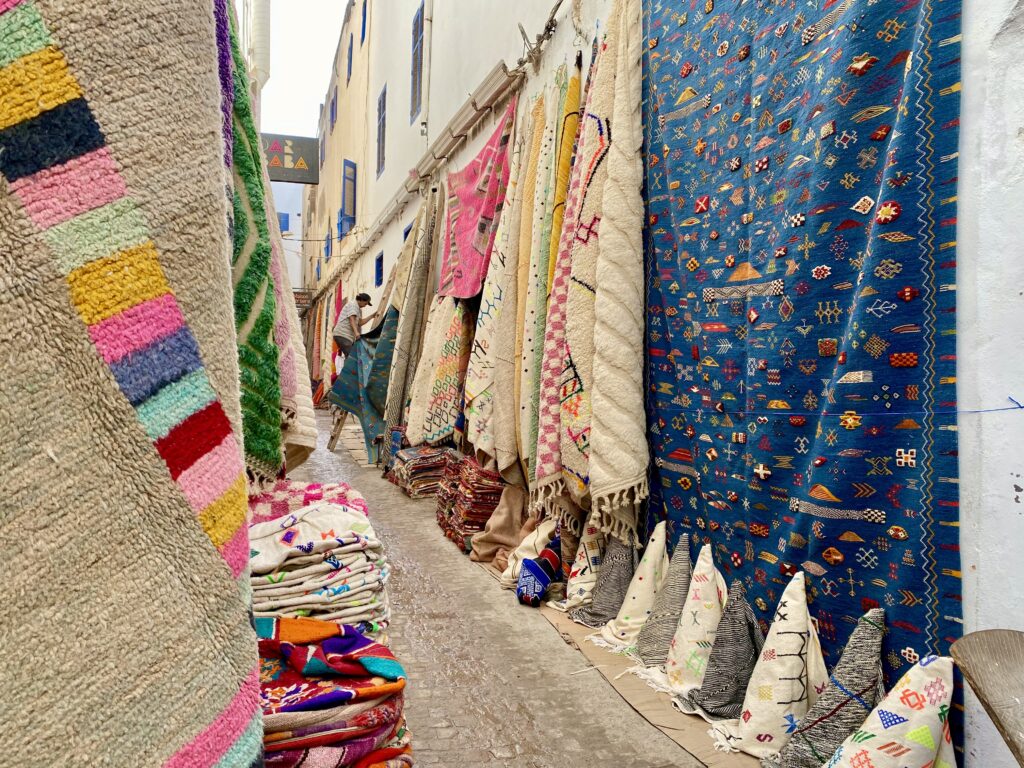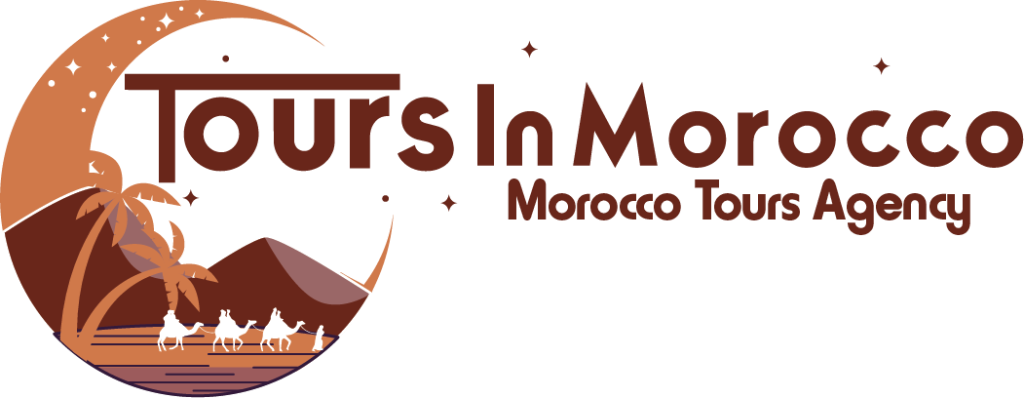Crafts and carpets in Morocco

Purchasing crafts and carpets in Morocco not only captivates tourists but also forms an integral part of the daily livelihoods of thousands. The vibrant essence of traditional crafts, yielding everyday items, pulsates through the country, constituting a compelling attraction. This vitality is unmistakable in the medinas, where sprawling souks are devoted to the trade of such handcrafted wares. In this article, we guide you through the primary artisanal products awaiting discovery during your trip to Morocco.
Carpets in Morocco, star product of Moroccan crafts
In Morocco, rugs transcend mere floor coverings; they are veritable masterpieces. Scattered throughout nearly every city, specialized locales showcase a diverse array of techniques and styles. Broadly categorized, there are the rustic Berber rugs, hailing from the Middle Atlas and characterized by their robust texture, alongside the vibrant Northern Moroccan rugs (found in cities like Rabat, Tetouan, Chefchaouen), renowned for their kaleidoscope of colors. However, the epitome of prestige lies in the exquisite rugs from Fes, meticulously embroidered with silk, linen, cotton, satin, and threads of gold.
Leather, a tradition
An enduring symbol of Moroccan craftsmanship, leather takes center stage in the realm of ‘leather goods.’ This term encompasses a spectrum of artisanal creations crafted from this versatile material. In recent years, the offerings have evolved with a discernible increase in sophistication and diversity. What once comprised basic saddles and slippers has blossomed into an expansive catalog featuring poufs, bags, suitcases, belts, and even fashion-forward items such as jackets. The thriving evolution of Moroccan leatherwork encapsulates both tradition and contemporary flair.
Jewelry, Moroccan luxury
Morocco streets also host an array of exquisite jewelry awaiting discovery. Remarkably, in numerous cities, jewelers have maintained their presence in the same neighborhoods for centuries, adding an enchanting historical allure to these areas, drawing tourists in. Cities like Marrakech, Essaouira, Fes, and Rabat showcase stunning creations crafted from gold, silver, and precious stones. In the Berber regions, the focus shifts exclusively to the artistry of silver, creating a distinctive and culturally rich offering for those exploring the country’s diverse jewelry landscape.
Basket weaving, the art of everyday life
In stark contrast to jewelry, basket weaving is an art form that gives life to everyday items rather than opulent luxuries. Yet, its inherent originality captures the fascination of many tourists, making it a compelling choice for unique travel souvenirs. Craftsmen skillfully employ materials such as reeds, rushes, and dwarf palm trees to fashion an array of creations, including garden furniture, baskets, and even captivating lamps, among other functional and aesthetically pleasing objects. The simplicity and ingenuity of basket weaving in Morocco transform commonplace items into cherished mementos for discerning travelers.
Ceramics: decoration and utility
Concluding our exploration of Morocco five prominent craft specialties, we turn our attention to ceramics an art deeply interwoven into the fabric of daily life in the country. Within this realm, a distinction arises between decorative ceramics and those crafted for utilitarian purposes. Notably, the vibrant blue creations of Fes capture attention, while Safi contributes earth-toned brown, green, and yellow pieces. Glazed clay works from Azemmur, Marrakech, Meknés, and Rabat, among other locales, further underscore the rich diversity and artistry ingrained in Morocco ceramic tradition.
What are the handicrafts in Morocco?
Morocco rich handicraft tradition encompasses sought-after rugs from Marrakech and Fes, intricate leather goods like bags and jackets in Marrakech, iconic blue ceramics in Fes, glazed clay works in regions such as Safi, Azemmur, Marrakech, Meknés, and Rabat, and exquisite jewelry crafted in gold, silver, and precious stones found in markets across cities like Marrakech, Essaouira, Fes, and Rabat. Additionally, the art of basket weaving using reeds and palm trees produces practical yet aesthetically pleasing items. These diverse handicrafts not only showcase artistic talent but also offer visitors unique and culturally rich souvenirs.
What are carpets used for in Morocco?
Carpets in Morocco serve both functional and artistic purposes. Traditionally, they are used as floor coverings to provide warmth and insulation in homes, particularly in colder regions. Additionally, Moroccan carpets, known for their intricate designs and vibrant colors, are considered works of art. They often adorn living spaces, adding a touch of cultural richness and aesthetic appeal to interiors. Beyond practical use, these carpets are valued as symbols of craftsmanship and cultural heritage. Visitors often purchase them as unique souvenirs, contributing to the preservation of Morocco weaving traditions and providing a tangible connection to the country’s vibrant artistic legacy.
How much is a Moroccan rug in Morocco?
The price of Moroccan rugs in Morocco can vary widely based on factors such as size, material, design intricacy, and the region where they are purchased. Generally, smaller and simpler rugs can be found for around 500 to 1,500 Moroccan Dirhams (approximately $50 to $150 USD). However, larger and more intricately designed rugs, particularly those made with high quality materials like wool or featuring complex patterns, can range from 2,000 to 10,000 Moroccan Dirhams (approximately $200 to $1,000 USD) or even more. Prices can be influenced by negotiation skills, the location of purchase (e.g., medina markets or specialized shops), and the reputation of the artisan or seller. It’s common for buyers to engage in friendly haggling to reach a mutually agreeable price.

